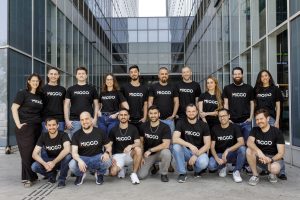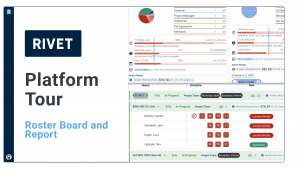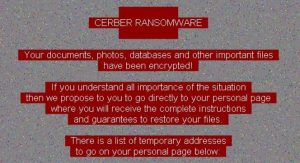Breaking Analysis: Tintri Bags $25 Million in Fresh Financing To Get Into Virtual Storage Fray
![]() Storage startup Tintri just bagged another round of financing – $25 million round of fresh financing to expand it’s network attached storage appliance for virtualized environments.
Storage startup Tintri just bagged another round of financing – $25 million round of fresh financing to expand it’s network attached storage appliance for virtualized environments.
Tintri a was funded by Silicon Valley venture capital powerhouse New Enterprise Associates (NEA) and General Partners Pete Sonsini. The new round was led by Menlo Ventures and Lightspeed Partners.
The news continues to pour in around the VMware ecosystem that is developing like a tsumani. Other ecosystems are stagnant and leaders like Cisco and HP are cutting back laying off and restructuring working hard to get a position in the massive growing market of cloud meets big data.
Storage is hot and SiliconANGLE has been deep in the convergence of storage, servers, and networking. Tintri hopes to capture some of that new market. As I reported yesterday, Nicira was acquired by VMware for $1.2 billion. This validates the Tintri opportunity around two of the hottest trends in technology in decades: 1) solid state and 2) infrastructure virtualization (storage, server, and now network). Additionally, 10gig ethernet and Intel’s advances in multi-core processors adds to the massive innovation wave hitting the industry today.
Tintri developed a new type of Network Attached Storage (NAS) device; an appliance specifically designed for virtualized environments. The product only started shipping in April last year, and is based on flash and SATA – two of the biggest buzz words in the storage world. Trintri has developed an innovative cost advantage with VMs with flash (like many others). This is the big trend that the Nicira news points to – like we’ve been saying this is the new big trend – Converged Infrastructure.
SiliconANGLE had a chance to sit down with the CEO Kieran Harty. He and Wikibon’s Dave Vellante talked at VMworld last year. Kieran said
“We were constrained by not being able to have control of the SAN, so we had to work with VMware with existing SANs. Essentially what we’ve done is making the network device friendly to virtualization, and we said that that’s the environment in which it needs to work.”
Harty explained the appliance comes with about one terabyte worth of flash, which is optimized via compression, dedupe and working set calculations to have the same value as 8.5 terabyte of flash. He continued to detail the offering’s main advantage is that it was built from the ground up to be installed in the virtualized datacenter: everything is presented as virtual machines and virtual disks, snapshots are taken on a VM level and virtual machine replication is also included. Further, the appliance’s file system is also optimized for that.
Here is an interview with CEO Harty at VMworld 2011 last year talking to SiliconANGLE about his companies prospects.
Harty compared his product compared to traditional NAS. The latter’s file system is built to process a very large quantity of both small and large files, while in a virtualized deployment you only see a small number of large files that frequently access metadata – which is what Tibtri was aiming for. The company’s goal is to solve the whole problem of making legacy storage virtualization friendly, rather than offering a temporary fix.
Solid State is the Key To Enterprise Storage
The information industry is living through a revolution in data storage. Spinning disks whirling around the data center are being replaced by flash storage with no moving parts.
When you think of data storage, you might think of hard drives, which have a whole lot of moving parts. Solid state storage, on the other hand, has none. Whereas data is stored magnetically on spinning hard drives, solid state storage uses electrical charges. Like RAM, solid state storage uses integrated circuits, but unlike RAM these circuits can hold their charge even when no power is being supplied to the device.
From a pure performance standpoint, solid state storage is a speed demon when compared to spinning disk. Boasting true random access and super-low latency, this kind of storage can read data at speeds that would require dozens or hundreds of spindle-based hard drives to match.
Read this primer on Solid State with round up of the vendors- source: Wikibon.org.
Companies to watch in this space
FusionIO – Fusion-io is a pioneer of a new storage memory platform that significantly improves the processing capabilities within a data center by moving process-critical, or active data closer to the CPU where it is processed.
Nimble Storage – Nimble Storage was founded by a team of industry veterans who developed groundbreaking primary storage and deduplication architectures
Pure Storage – Pure Storage has a simple mission: to enable the widespread adoption of flash in the enterprise data center.
Nimbus Data – Nimbus Data Systems, low-latency flash memory hardware, comprehensive data management and protection software, and highly-scalable multiprotocol storage features for server and desktop virtualization, databases, HPC, and next-generation cloud infrastructure.
Solid Fire – SolidFire believes traditional storage is way too slow, far too complex, and much too expensive to deliver the infrastructure large-scale cloud computing environments demand. Solid Fire is building some of the best management software to provision and manage big clouds.
Tegile – Tegile Systems is pioneering a new generation of enterprise storage arrays that balance performance, capacity, features and price for virtualization, file services and database applications.
Virident – Virident helps enterprises solve the challenge of poor application performance with flash storage solutions that speed application performance, ensure predictable performance under various workloads, and are compatible with all servers.
Whiptail – WHIPTAIL, a world leader in flash-based NAND silicon storage technology.
SiliconANGLE Wikibon Research Links: Fusion-io, Kaminario, NimbleStorage, Nimbus Data Systems,Pure Storage, SolidFire, Tegile, Tintri
A message from John Furrier, co-founder of SiliconANGLE:
Your vote of support is important to us and it helps us keep the content FREE.
One click below supports our mission to provide free, deep, and relevant content.
Join our community on YouTube
Join the community that includes more than 15,000 #CubeAlumni experts, including Amazon.com CEO Andy Jassy, Dell Technologies founder and CEO Michael Dell, Intel CEO Pat Gelsinger, and many more luminaries and experts.
THANK YOU













